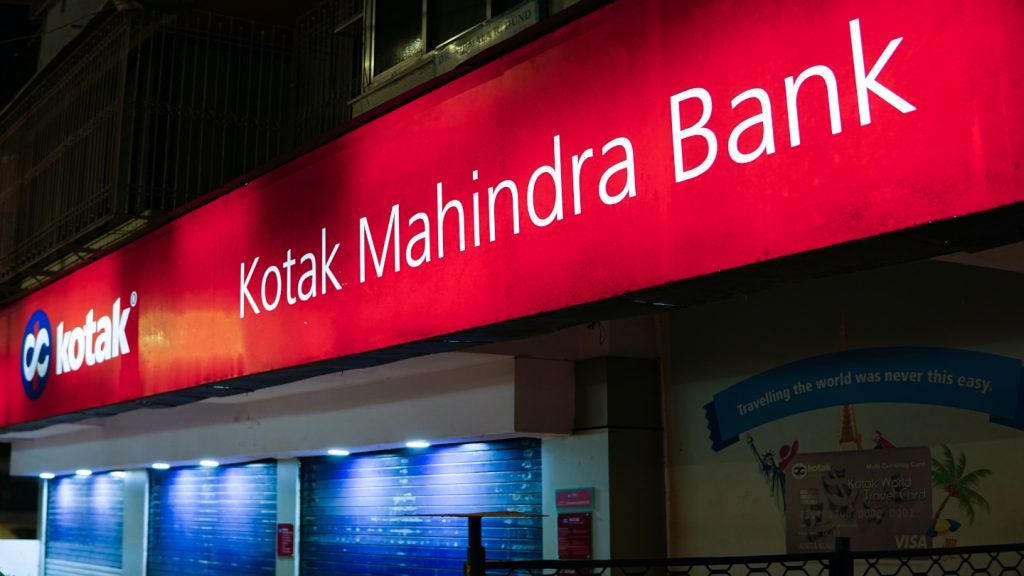Proponents of social
media have long argued that too many banks have failed to grasp the
significance of social media for their customer relationship
management. Ron Shevlin, senior analyst at the consultants Aite
Group, tells RBI how banks can exploit the potential of
social media to their business advantage.
 It is widely agreed among
It is widely agreed among
research consultancies and analysts that social media is more than
just a marketing tool; rather, it is a way of communicating with
customers.
Yet, according to the latest
research by the consultants Ovum, 60% of retail banks worldwide do
not currently use social media as a tool to engage with
customers.
In contrast, only 6% of
retail banks are currently using social media platforms for
customer enquiries.
On a slightly more positive
note, 14% said that they used it as a marketing tool, with another
12% stating that they plan to do so by the end of next
year.
How well do you really know your competitors?
Access the most comprehensive Company Profiles on the market, powered by GlobalData. Save hours of research. Gain competitive edge.

Thank you!
Your download email will arrive shortly
Not ready to buy yet? Download a free sample
We are confident about the unique quality of our Company Profiles. However, we want you to make the most beneficial decision for your business, so we offer a free sample that you can download by submitting the below form
By GlobalDataBut banks who do not engage
with social media are making themselves vulnerable to being left
behind by banks who exploit social media to its full
potential.
Ovum’s research shows that
most retail banks have not yet grasped the significance of social
media for their customer relationship management.
The research states: “Amid
the clamour and hyperbolic statements regarding social media, there
is not yet universal acceptance of the importance, suitability and
use of this channel in retail banking for either marketing or
customer interaction purposes.”
Ron Shevlin, senior analyst
at the consultants Aite Group, told RBI: “From a prospect
perspective, potential customers can easily see if the bank is
really trying to help its customers manage their finances, and see
comments from other customers, to make smarter decisions about
whether or not to do business with that bank.
“In the past, the cost of
communicating with customers had a high price tag – sending out a
brochure or piece of educational material, or picking up the phone
to call a customer, was expensive and time consuming. If a bank was
going to do that, it had to make sure that there was a ‘return’ on
that investment.”
Bazaarvoice, a company that
specialises in customising online technology solutions, revealed in
its survey, CMOs on Social Marketing Plans for 2011 – What’s the
Real Value of Customer Voice, that CMOs found tying social media
engagement to revenues a challenge: Only 40% of CMOs across
different business segments assigned a percentage of their
marketing spend to social media engagement.
 Although three in four CMOs
Although three in four CMOs
stated that they would tie social media to revenue in 2011,
measuring ROI in social media remains a challenge.
However, it is no secret that
social media activity can spur compelling, real-time insights into
consumer trends and guide organisations to improve their business,
Bazaarvoice concluded. Despite the obscure link to revenues, social
media initiates valuable consumer interaction and provides a
platform for consumers to share key insights with
brands.
“These aggregated insights,
when analysed and put into action, create value far beyond the
marketing organisation, impacting products, vendor relationships
and corporate strategic initiatives,” according to
Bazaarvoice.
Shevlin said: “Social media
brings the cost of communicating with customers down to practically
zero. Creating a blog or a Facebook page enables a bank to
communicate effectively with a lot of consumers and in a way that
not every message has to be a ‘sales’ message. The bank can talk
about market conditions, provide helpful tips on how to manage
one’s finances etc.”
Among benefits of customer
engagement via social media are customer loyalty and retention,
cross-sales opportunities, word-of-mouth marketing and customer
acquisition, complaint resolution, customer service support, public
relations and reputation management.
Blogs and podcasts give an
institution a human voice. But the downside is that it requires
constant commitment to upload new, entertaining and stimulating
content for readers. One example of a successful, committed blog is
that of US-bank Wells Fargo.
Wells Fargo has four blogs,
of which the main one is an advice blog on natural disasters. The
‘Guided by History’ blog was set up in 2006 in celebration of the
centennial observance of the San Francisco earthquake and has
become a blog on disaster preparedness. The content is generated by
Wells Fargo associates, whose job titles are mostly not
communication related.
 Other, more
Other, more
bank-related, blogs include that of RaboPlus, the Australian
subsidiary of Netherland’s-headquartered Rabobank. The blog was
launched in late 2007 and content is written by the general manager
Bryan Inch. The bank said that its main purpose was to offer
customers a channel to communicate directly with the general
manager.
It is not just blogs and
podcasts that can give an institution a human voice. Twitter and
Facebook, famous for personal updates on people’s lives, provide a
creative platform to market new products or deal with customer
queries in real-time.
Australia-based NAB has used
Twitter to ‘break up’ with other banks. On the weekend before
Valentine’s day this year, the bank tweeted: “Sooooo stressed out.
Have to make a tough decision and I know I’ll probably hurt
someone’s feelings! Arrggghhh.”
NAB urged its followers to
‘break up’ with CBA, ANZ and WestPac, and offered to pay the A$700
($702) mortgage exit fees that WestPac and NAB charge.
NAB exploited social media to
involve its followers in its ‘personal affairs’, posting subsequent
tweets such as: “Thanks for your concern, everyone. Relationships
can be tough sometimes! Good advice helped”.
They then posted a link to
its YouTube page, (which was set up in 2005 and has had 71,852
channels as well as 238,807 total upload views) and its micro-site
www.breakup.nab.com.au, for more information.
The YouTube video shows
somebody – NAB – writing a letter to Commonwealth of Australia
Bank, ANZ and Westpac, explaining the break up: “(…)I’ve decided
I need to break up with you. Honestly, it isn’t you…it’s me. I’ve
changed. I’ve moved on. (…) It’s not just one thing that got me to
this place – remember when you tried to convince anyone who’d
listen, your customers had a great variable standard rate on home
loans, but actually it was me who offered my customers the lowest
of the major banks for the past 18 months. Me. Not you. That really
hurt.”
On the other side of the
Atlantic, HSBC-direct banking subsidiary first direct runs a
microsite, www.live.firstdirect.com, that features positive as well
as negative customer opinion from across eight million different
websites, including blogs, forums and other social media sites. The
site also features a tool entitled Talking Point, which allows
customers to state their opinion of the bank.
But according to Shevlin,
social networks such as Facebook, Twitter and YouTube are unlikely
to generate new sales.
“However, if the goal is
brand awareness or brand affinity, these social media tools can be
helpful in improving those measures,” he said.
Shevlin added that he was not
aware of any bank that engaged in social media and got hurt in
terms of sales and retention.
So if it has not hurt any
bank yet, why do many banks still seem reluctant to accept and
exploit the social media potential?
There are two major
challenges for banks trying to overcome slow or reluctant
engagement with social media:
- Reputation and
image – with traditional marketing tools, organisations
can directly communicate their message to their target group. But
social media is a two-way communication, it engages customers and
provokes a dialogue. Furthermore, the organisation loses authority
as it gives more influential power to the consumer. - Compliance and
regulation – Any engagement with social media must comply
with regulatory rules and be accurate. Meeting those regulations
means that generating compelling and entertaining media content is
not straightforward.
According to Shevlin, there
is also another reason why banks have been reluctant or slow to
exploit social media potential to their advantage: “They’re not
sure what the benefit of doing something [in social media] would
be,” he says.
 Even if banks are
Even if banks are
reluctant to engage in social media in order to safeguard their
reputation, it does not prevent users from setting up a Facebook
page to demonstrate their dissatisfaction with a bank, or set up a
bogus Twitter account in the name of an organisation to damage
their reputation by posting embarrassing tweets.
Consumers will voice their
dissatisfaction about an organisation, as the example of Bank of
America shows. There are several Facebook groups entitled ‘I hate
Bank of America’. One is liked by 1,610 people; another, which
features a banner reading “Bank of America sucks”, has 1,117
followers; yet another has 3,823.
However, these publicly
critical groups are a minority compared to Bank of America’s
Chicago Marathon fan page, 20,219 people like. Including the
official Bank of America Facebook page, the total number of ‘likes’
rises to 27,892 (see table above).
Accordingly, engaging in
social media not only hands over some control to the consumer – it
can also be used effectively to improve the lender’s
reputation.
As banks push customers
towards direct channel banking, social media provides a valuable
resource to make the consumer feel closer to the bank and identify
with it. Another notable example includes more than half am
consumers signing up to Barclays’s Premier League Facebook
page.
“What I would urge banks to do is not so much to ‘tap into
social media’ but to do a better job of identifying the bank’s
strategy, objectives, and business challenges. And then ask ‘how
can social media help us execute our strategy, achieve our
objectives, and overcome our challenges,’” Shevlin
concluded.







